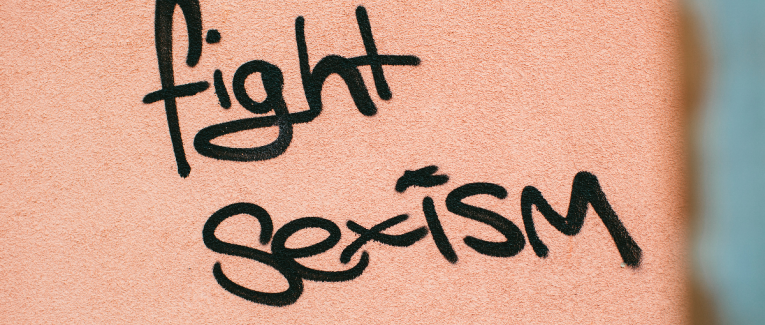
The Ambiguity of Gender Roles in L’homme-fille by Guy de Maupassant
 11 min
11 min
The Ambiguity of Gender Roles in L’homme-fille by Guy de Maupassant
Have you ever wondered why certain negative traits are attributed to women when criticizing men's behavior? Can human behavior be categorized based on gender stereotypes?
This paper seeks to analyze the representation of gender in L’homme-fille through a feminist lens, identifying instances of sexism and gender stereotyping while questioning whether Maupassant’s perspective leans toward misogyny or misandry.
Guy de Maupassant (1850–1893) was a master of the short story, celebrated for his ability to delve into the complexities of human nature and social conventions. In his short story L’homme-fille, translated as The Effeminate Man, Maupassant explores the blurred lines between masculinity and femininity, addressing themes of gender ambiguity within the societal context of 19th-century France. The story offers a critique of traditional gender roles and stereotypes, bringing into focus how men exhibiting "feminine" behaviors were perceived within Parisian society.
Historical and Social Context
L’homme-fille was written at a time of great social and cultural changes in France. The fin-de-siècle period marked a shift in how gender roles were perceived, as women began to challenge their traditional domestic roles, and masculinity was subject to increasing scrutiny. This story reflects the anxieties and ambiguities that accompanied these shifts, particularly concerning the notion of the "effeminate" man, a figure who embodied traits traditionally associated with women (Giraud, 1986).
The title of the story itself is loaded with ambiguity. The term homme-fille, which literally means “man-girl,” evokes a sense of gender fluidity that was uncommon and unsettling in 19th-century society. Maupassant introduces a category of men who, while not homosexual, display feminine characteristics in both their behavior and temperament. In Paris, where the arts and journalism thrived, this type of man was viewed with a mixture of fascination and disdain. The story does not follow a traditional narrative arc but instead offers a reflection on the archetype of the homme-fille, a man who embodies stereotypically feminine traits such as emotional volatility and capriciousness (Maupassant, 2014, pp. 55–65).
"L’Homme-fille" was initially published in the magazine "Gil Blas" on March 13, 1883, under the pseudonym "Maufrigneuse," and later included in the collection "Toine.“pp. 55-65)
Theoretical Framework: Constructed Notions of Gender
In analyzing L’homme-fille, it is helpful to draw on the theoretical frameworks of feminist thinkers such as Simone de Beauvoir, Judith Butler, and Kate Millett, who argued that gender is a socially constructed concept rather than a biological or psychological given. In The Second Sex, de Beauvoir famously wrote, “One is not born, but rather becomes, a woman” (Beauvoir, 1949). This notion applies equally to Maupassant’s portrayal of men in L’homme-fille. The homme-filles are not born with feminine traits; rather, they adopt these behaviors in response to the societal pressures and expectations of their time.
Judith Butler’s concept of gender performativity is also relevant to this analysis. Butler argues that gender is not something one is, but something one does—a series of actions and behaviors that are performed in accordance with societal expectations (Butler, 1990). The homme-filles in Maupassant’s story perform femininity, not because they are inherently feminine, but because they have internalized the societal norms that dictate how men and women should behave.
Researchers Marianne Bury and Noelle Benhamou have discussed the place of women in Maupassant's work and commented about Maupassant's misogyny and pessimism Marie-Claire Bancquart analyzes Maupassant's trouble with the modern woman, as the fin de siècle invents it .
Claire Giraud has attempted through her research "to expose and analyze human relations through the exchanges between men and women in bourgeois society at the end of the 19th century by highlighting the consequences of the test of force in couples free or married regardless of romantic relationships. She examines the intimate relationships of the masculine and the feminine through the games of seduction. She uses the role of love to analyze the love ritual in Parisian society at the end of the century.
According to the Acts of the Fécamp colloquium:
“The question of women, repeatedly raised by Maupassantian criticism , receives here some new answers. For Mary Donaldson-Evans and Uwe Dethloff , Maupassant is a misogynist. According to the first, he imprisons the woman in the double prison of a status of object defined by the man and of a masculine narrative discourse, and, according to the second, if he happens to defend the women's freedom, it is only to better combat bourgeois “ patriarchalism ”. Misogyny goes hand in hand with the incomprehension of women. »
Ambiguity and Gender Stereotypes
« Car nous sommes tous, en France, des hommes-filles, c’est-à-dire changeants, fantasques, innocemment perfides, sans suite dans les convictions ni dans la volonté, violents et faibles comme des femmes. » (pg.438)
The key to understanding the ambiguity of gender roles in L’homme-fille lies in Maupassant’s portrayal of masculinity and femininity as fluid and interchangeable. The men in the story are described as possessing the “nature of girls, a charm of girls, a temperament of girls,” and their emotional responses are likened to those of women (Maupassant, 2014, p. 438). For instance, one passage reads: “Because we are all, in France, homme-filles, that is to say, changeable, capricious, innocently perfidious, without consistency in convictions or will, both violent and weak like women” (Maupassant, 2014, p. 438). Here, Maupassant not only stereotypes femininity as weak and inconsistent but also uses these traits to criticize men who do not conform to traditional masculine ideals.
The ambiguity arises from the fact that the men in the story are not entirely feminized nor do they fully conform to the masculine ideals of the time. They exist in a liminal space, embodying traits from both genders. This portrayal challenges the binary understanding of gender roles, suggesting that traits such as emotional volatility and inconsistency are not exclusive to women but can also be found in men (Bury, 1988).
“Les relations des hommes-filles sont incertaines… un jour ils vous chérissent, le lendemain ils vous regardant à peine, parce qu’ils sont une nature de filles, un charme de filles , un temeperemant de filles, tout leurs sentiments ressembelent a l’amour des filles”
"The relationships of homme-filles are uncertain... one day they cherish you, the next day they barely look at you, because they have a nature of girls, a charm of girls, a temperament of girls, all their feelings resemble the love of girls."
The story also highlights the fragility of traditional masculinity. The men who exhibit feminine traits are seen as lacking in strength and conviction, qualities that were, and still are, often considered fundamental to masculinity. Yet, Maupassant does not offer a clear condemnation of these men. Instead, he presents them as a natural product of Parisian society, where traditional gender roles are increasingly blurred (Donaldson-Evans & Dethloff, 1996).
Misogyny or Misandry?
One of the central questions raised by L’homme-fille is whether Maupassant’s portrayal of gender roles is misogynistic, misandristic, or simply a reflection of societal norms. On the one hand, the story reinforces traditional gender stereotypes by associating femininity with weakness, changeability, and emotional instability. The comparisons between the homme-filles and women imply that being like a woman is undesirable, suggesting a misogynistic view of femininity.
For instance, Maupassant writes: “They treat their friends like the girls treat their little dogs. It’s the beloved little puppy that they kiss passionately... but that they will throw out the window in a fit of impatience” (Maupassant, 2014, p. 438). This passage equates the treatment of friends by homme-filles with the capricious behavior of women, reinforcing the stereotype of women as fickle and irrational (Bancquart, 1986).
On the other hand, the story can also be interpreted as misandristic, as it critiques men who fail to live up to the masculine ideal. The homme-filles are portrayed as lacking in the qualities traditionally associated with masculinity, such as strength and emotional resilience. This portrayal suggests that Maupassant is equally critical of men who do not conform to societal expectations of gender roles.
The story's overall tone is one of ambivalence. Maupassant neither fully endorses nor entirely rejects the behaviors of the homme-filles. Instead, he presents them as a product of their environment, shaped by the changing social norms of Parisian society. This ambivalence makes it difficult to categorize the story as either wholly misogynistic or misandristic. Rather, it reflects the complexities and contradictions inherent in the societal expectations of gender roles during the 19th century (Fonyi, 1996).
L’homme-fille offers a complex and nuanced portrayal of gender roles, reflecting the social anxieties of 19th-century France. Maupassant’s depiction of men who exhibit feminine traits challenges the binary understanding of gender, suggesting that traits such as emotional volatility and inconsistency are not exclusive to women. At the same time, the story reinforces traditional gender stereotypes, associating femininity with weakness and inconsistency. Whether Maupassant’s portrayal of gender roles is misogynistic or misandristic is ultimately ambiguous, as the story critiques both men and women for failing to conform to societal expectations. In doing so, L’homme-fille invites readers to reflect on the socially constructed nature of gender and the consequences of defying convention.
References
- Bancquart, M.-C. (1986). Maupassant et la femme moderne. Paris IV.
- Beauvoir, S. de. (1949). Le Deuxième Sexe. Gallimard.
- Bury, M. (1988). Maupassant pessimiste? Romantisme, 61, 75–83.
- Butler, J. (1990). Gender Trouble: Feminism and the Subversion of Identity. Routledge.
- Donaldson-Evans, M., & Dethloff, U. (1996). Misogyny and the incomprehension of women in Maupassant. In Proceedings of the Fécamp Colloquium. Romantisme, 94, 142–143.
- Fonyi, A. (1996). Maupassant et l'écriture. Romantisme, 26(94), 142–143.
- Giraud, C. (1986). The Masculine and the Feminine in the Work of Guy de Maupassant. Doctoral Thesis, Paris IV.
- Maupassant, G. (2014). Contes et nouvelles (L. Forestier & M. Reid, Eds.). Gallimard.









 English
English
 Français
Français
 Deutsch
Deutsch
 Italiano
Italiano
 Español
Español



 Beitragen
Beitragen

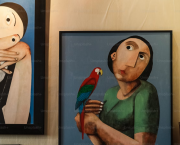






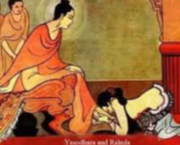
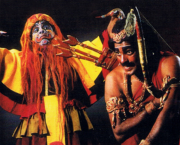



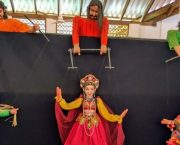



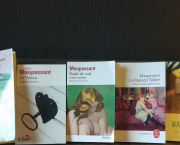
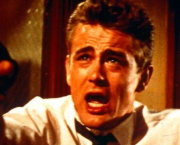





 Du kannst deine Lieblingsautoren unterstützen
Du kannst deine Lieblingsautoren unterstützen





